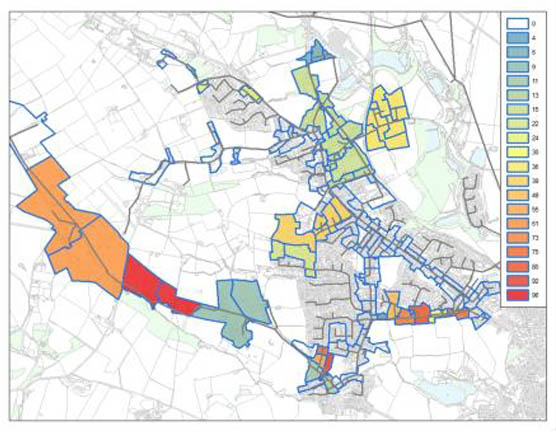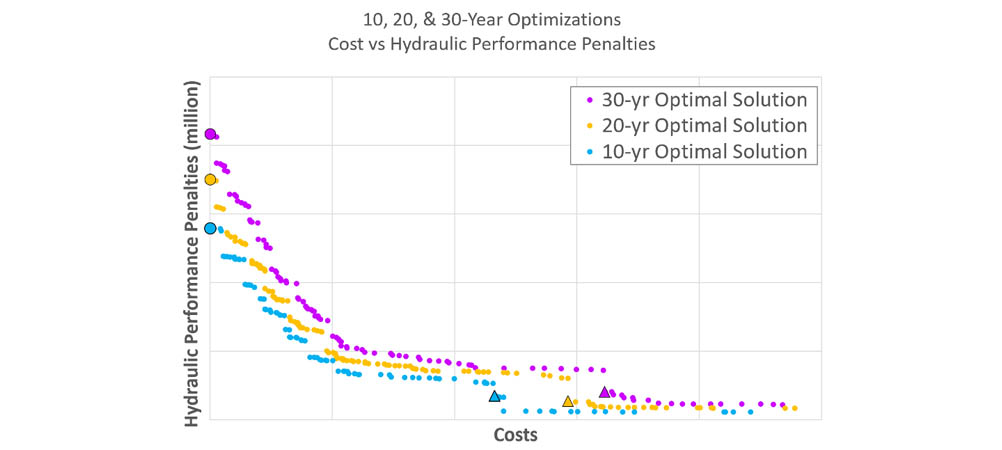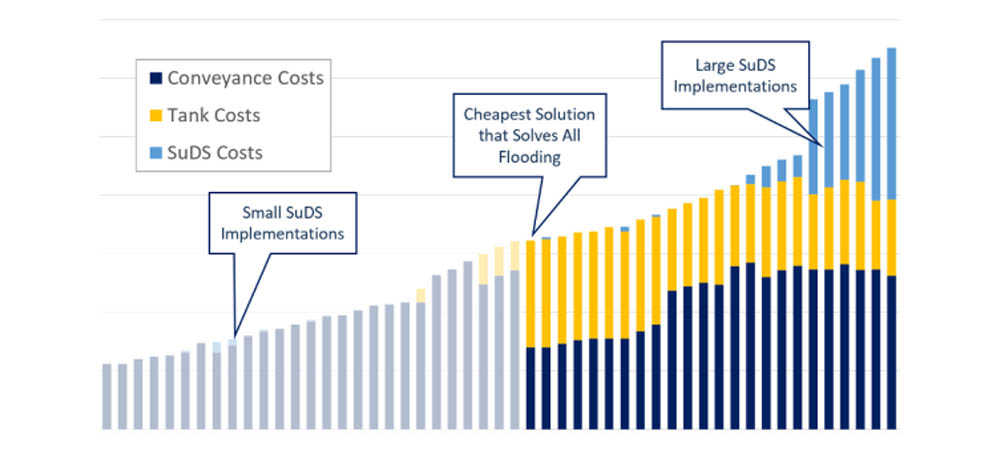The issue
Key points
- Determine if SuDS Plays a Significant Role in Optimal Flood Reduction Solutions
- Explore a Wide Range of “What If” Scenarios & Cost Sensitivity Tests
- Develop Repeatable & Defensible Decision Making Process for other Catchments
UU used its subscription to Optimizer TM for InfoWorks ICM to address flooding issues in the Bury catchment. Optimizer™ was directly integrated with InfoWorks ICM, allowing UU to import their models into Optimizer™, saving time and generating the most accurate optimisation possible.
Before partnering with Optimatics, United Utilities had performed an initial investigation into potential solutions, including opportunities for SuDS strategies. They wanted to resolve the flooding issues in the most cost-effective way possible and determine the best combination of SuDS conveyance and storage strategies.
The optimisation analysed two different objectives:
- Project Costs
- Hydraulic Performance ( Freeboard, CSOs, Basin Outflow)

The solution
The project team used SuDS Studio opportunity mapping data to inform the potential locations, sizes, and strategies to consider in the optimization. These options were combined with the high-level SuDS planning ideas the United Utilities team generated in their initial investigation, resulting in a wide range of potential SuDS opportunities for selection in the optimization.
Scenarios
United Utilities used Optimizer™ to quickly address a wide range of potential scenarios, such as:
- Understanding the impacts of different solution strategies
- Comparing different target levels of protection 10, 20 and 30-year events
- Making an informed decision whether to focus on the most pressing flooding locations or resolve all flooding locations at once
- Understanding the impact of potential utility conflicts and constructability challenges
- Reduce SuDS cost uncertainties related to over or underestimating costs
The results
Optimizer™ identified the best combinations of traditional and SuDS strategies to resolve flooding within the
catchment.
For this catchment, the most cost-effective solutions were primarily conveyance and storage based improvements. However, Optimizer™ also identified a handful of high performing SuDS strategies to supplement the traditional infrastructure upgrades and align with United Utilities desire to invest sustainably.
The project also helped UU develop an easily automated process to apply to other areas moving forward. The project team was able to build a standardized, repeatable process for:
- Assessing Existing System Performance
- Automating Formulation Build
- Optimization Scenario Analysis
- Results Processing Visualization


Perhaps most importantly, Optimizer™ showed that it could help remove bias toward traditional or SuDS solutions and reasonably consider all potential strategies in an impartial and defensible way, allowing United Utilities to make the best possible planning decisions.
